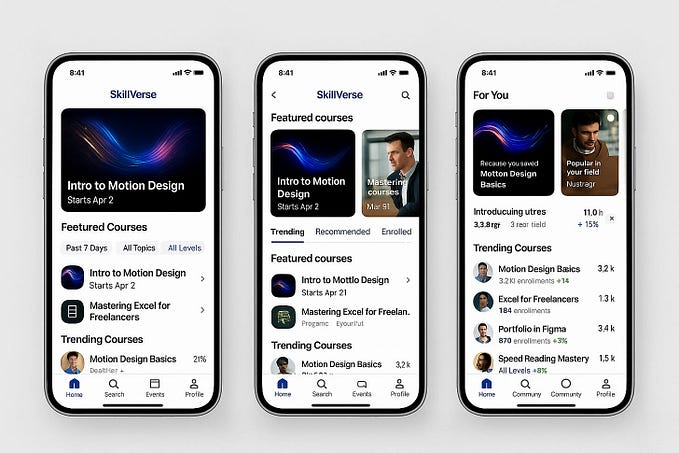6 adaptable steps for a UX Research process
A step-by-step guide to conducting a UX Research

When it comes to UX Research, most people was already aware of how important it is in building a digital product, but questions about the process of UX Research or how to conduct UX Research are still the top search in Google. It means that there are still a lot of people who don’t really understand the process of conducting UX Research.

I write this article to answer that question. This is the main process that I followed ever since I learned about UI/UX Design in the early year of 2020 when I wrote my first case study. I know that not every project will have the same process, it can be different from each other and depends on the context of the project itself. That’s why I called it “the main process.” The main process means that it contains the adaptable steps you can follow to conduct UX Research whatever the problem you need to solve or the UX Research method you’ve chosen.
When we talked about the UX Research process, there are always some actions or steps that I think we must follow;
#1 Define the problem
I always believe that in order to tackle something, the first thing we need to do is by understanding the problem and the current situation. How could you handle something if you don’t understand the problem you have?
Just as UX Designers need a clearly articulated problem to create a solid design solution, UX Researchers also need a clear problem statement to create a useful research study. In design, you’re solving for user needs and business goals. In research, you’re solving for a lack of information. Identify what you already know and what you need to know and find out. A research problem statement describes your topic and your research goal.
#2 Select the approach
Now, you’ve identified what you want to find out, you can move on to how. Selecting the approach means that you have to choose a UX Research method in order to solve the problem. The method you’ve chosen is based on the problem and what kind of data you need to get.
I already wrote the article how to choose a UX Research method before, you can read this one;
#3 Plan and prepare for the research
After you know what kind of data you need to get and select the approach on how to get it, then in the next step you can move on to preparing the research.
Your research plan should include your problem statement, the duration of the study, who will be performing which roles, how you will target and recruit your participants, plus any necessary tools and materials. However, you can always add more details as they are helpful to you and to your team.
Since research is about seeking out new information, you’re going to encounter new situations and unpredictable circumstances. For example; you might plan for sixty-minute sessions but find that you’re getting all the information you need in half an hour. Or the participant didn’t show up at the session time so you have to schedule the session or change the participant. Just be clear about the points at which changes to your research plans might affect your larger project. It’s helpful to think about tradeoffs and fallback plans in a cool moment before you get started. What will you do if recruiting and scheduling participants looks like it’s going to take longer than you have planned? maybe you can push out the dates, talk to fewer people now and try more later, or relax your criteria for participants. There’s no one right answer, only the best way to meet your research goals at the time.
#4 Collect the data
When you’re conducting the research study, make sure you collect the data. You might have photos, video recordings, notes, screen captures, audio recordings, and even handwritten notes during the session. Get them as possible as you can. Save these files into your shared drive. It could be better if you save them in online tools such as Google Drive or Dropbox, so it’s also easier for you to share them with your team. But, if you are in the field and away from internet access, have a small backup drive with you. Redundancy worked for the space program and a little bit certainly helps here.
You don’t want to lose any good data and you’re stuck making notes from your memory. So, pay attention to collecting your data during the research. The more organized you are in gathering and storing your data, the more effective and pleasant the analysis will be.
#5 Analyze the data
Once you have collected the data, gather it all together and look for meaningful patterns, turn those patterns into meaningful insights, and from those, the recommendations will emerge. Refer to your problem statement or your research goal and identify how the patterns answer them. You can use UX mapping tools such as affinity mapping, mental model, storyboard or empathy map, user journey, scenario mapping or user scenario, mind mapping, or any other methods that you think could interpret your research findings.
If you are working with a design team, get as many members as possible involved in the analysis because a group can generate more insights faster and internalise far more effectively than if you simply circulated a report.
#6 Report the results
Okay, you’ve conducted the research study and have meaningful insights in your hands, now it’s the time for you to share it with other people such as stakeholders or your leaders. The deliverables of a research process is a research report that generally summarizes the analysis of the data you have gotten. When you share the report, always write up a brief, well-organized summary that includes goals, methods, insights, and recommendations in your research report.
The type of reporting you to need depends on how decisions will be made based on the results. Within a small, closely-knit team you can document more informally than if you need results to influence executive decision-making at a larger organization. However, just make it based on the needs and the appropriate way of your organization.










